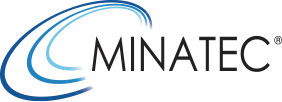News : DPFT
January 01 2023
Impact of mechanical properties of thin layers in SmartCut technology.
The SmartCut technology is nowdays widely used on the manufacture of innovative substrates such as SOI (Silicon-on-Insulator). The fundamental physical phenomena underlying this process are still being actively studied. In particular, the catastrophic fracture step, which allows the transfer of a very thin layer of a donor substrate onto a base or receiver substrate. An […] >>
January 01 2023
Laser induced nanostructures formation understanding for microelectronic
In the history of semiconductors, the requirements in terms of device size have always followed a descending trend. Low thermal budget solutions are now key to manage these specifications. Within this context, nanosecond laser annealing stands as an excellent solution. Laser process conditions can be adjusted to the material structure. During heating and according to […] >>
January 01 2023
Development of nanodielectrics for power electronics
Power electronics used in particular for the electric vehicle requires the fabrication of smaller and smaller devices able of sustaining high currents and high working voltages. The miniaturization of these components requires the development of new dielectric materials with high breakdown field. A promising approach is to combine the high dielectric constant of inorganic oxides […] >>
January 01 2023
Study of the anisotropy of dopant and compositional gradients in the reference ternary alloy for infrared detection
This thesis concerns the field of HgCdTe infrared detectors for astrophysical applications, for which the Infrared Laboratory of CEA -Leti is a world leader. The student will join the infrared laboratory which includes the entire detector manufacturing process. He will produce the samples using the technological means of elaboration available in the Leti clean room. […] >>
January 01 2023
2D layers of chalcogenide materials growth by van der Waals epitaxy for frugal electronics
Non-volatile magnetic memories (MRAMs), such as STT-MRAMs (Spin-torque Transfer MRAMs), appear to be extremely promising devices for reducing the energy consumption of memories. In this context, a very strong spin-orbit coupling at room temperature has been demonstrated in 2D heterostructures of Tellurium-based chalcogenide materials opening the way to new energy-efficient devices. On the other hand, […] >>



 Contact us
Contact us How to find us
How to find us







